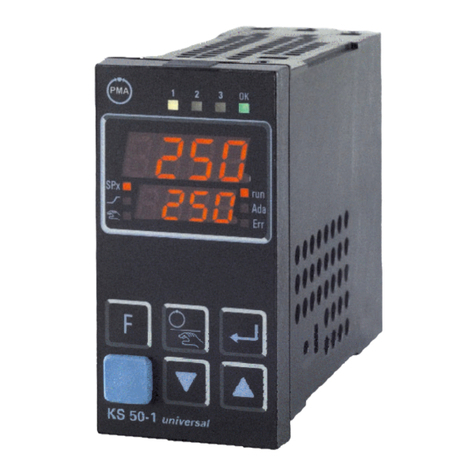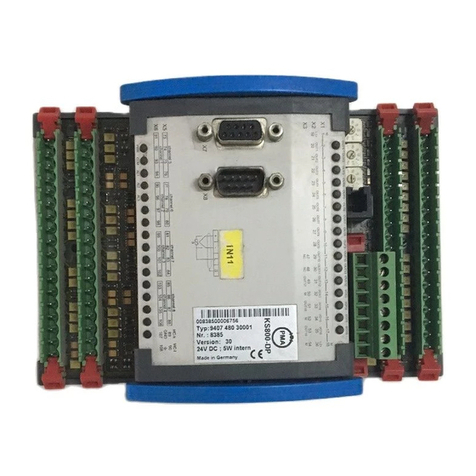
Multi-Temperature-Controller KS 800
Contents
1 Introduction ..................................................... 7
1.1 Basic structure .............................................. 7
1.2 Input ...................................................... 7
1.3 Functions .................................................. 8
1.4 Output .................................................... 8
2 Input signal processing ............................................ 9
2.1 Measurement value pre-processing ............................... 9
2.2 Measuring frequency .......................................... 9
2.3 Sensor types ................................................ 9
2.3.1 Thermocouples ......................................... 9
2.3.2 Resistance thermometer ................................. 10
2.3.3 Resistance ........................................... 10
2.3.4 DC voltage ........................................... 10
2.4 Measurement value correction .................................. 11
2.4.1 Application examples ................................... 12
2.5 Digital input signal pre-processing ............................... 12
2.5.1 Input signal distribution .................................. 12
2.5.2 Analog input signals .................................... 12
2.5.3 Digital input signals ..................................... 13
3 Controller block diagram .......................................... 14
3.1 Sequence control ........................................... 14
4 Set-point functions ............................................... 15
4.1 Set-point control ............................................ 15
5 Function block protocol .......................................... 16
5.1 Data structure ............................................. 16
5.2 Structure of configuration words ................................. 17
5.2.1 Function block instrument ............................... 17
6 Controller statuses and status priorities .............................. 21
6.1 Priority 0 automatic ......................................... 21
6.2 Priority 1 Tune, run ......................................... 21
6.3 Priority 2 Tune, error ........................................ 22
6.4 Priority 3 Sensor break ....................................... 22
6.5 Priority 5 Manual ........................................... 22
6.6 Priority 7 Y_Track .......................................... 23
6.7 Priority 8 Controller off ....................................... 23
7 Automatic - manual switch-over ..................................... 24
8 Self-tuning for single-loop controllers ................................ 25
8.1 Preparation for controller self-tuning: ............................. 25
8.1.1 Process at rest ........................................ 25
8.1.2 Selecting the stable correcting variable ...................... 25
8.1.3 Start from automatic mode ............................... 26
8.1.4 Start from manual mode ................................. 26
8.2 Self-tuning procedure with heating (2-point and three-point stepping
controller) ................................................ 26
8.3 Self-tuning procedure with heating and cooling processes: (3-point
controller) ................................................. 26
8.4 Set-point monitoring ......................................... 27
9499 040 49211 3






























